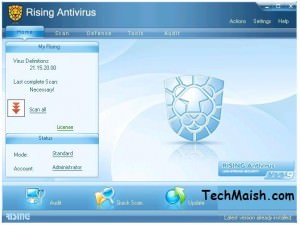Managing Change When Implementing New Software
Change can be hard for many people to accept. Even when the change is unquestionably positive for an organization, it can still spark uncertainty and resistance. At the very least, employees may stress over the thought, “I’m going to have to learn a whole new way of doing my job!”
The introduction of enterprise software for the first time – which integrates the operations of multiple departments – or the migration to a new enterprise software system from one that had been in place for years, can be met with a lot of resistance. Change management is a discipline with established principles and practices that can guide how employees can be prepared and supported so they accept change and adapt to new ways of working.

Managed effectively, change respects your employees’ needs to maintain performance standards and have access to open communication. Change management can also reduce costs and identify ways for the organization to develop in the future. Taking the time to create a well-planned software change management strategy will be a strong indicator of the likelihood of a successful implementation. Here are some guidelines to follow when creating a change management process for your new software implementation initiative.
Establish Communication Channels
When it comes to getting the entire staff on board with new enterprise software, support from the top means a lot. The change management process for the new software – along with the benefits the new software will usher in – should be vocally supported by the organization’s entire leadership team. Top-level support for the software will spread to the mid-level managers, and the managers’ support will lead to the software’s benefits being clearly communicated to the employees who report to them.
Appoint an In-house Project Manager with Oversight Authority
While your software implementation will likely involve an implementation specialist (some software vendors will also provide implementation services, but most recommend their clients hire a third party), you should still nominate an in-house project manager. The implementation provider will no doubt have a project manager assigned, but it’s wise to have someone from your own organization to oversee the project. That person needs not be an IT expert. Rather, he or she should have experience managing projects that involve lengthy timelines with multiple milestones and coordination of resources.
Software implementation involves the organizing, cleaning up, and transferring of your data; you do not want to simply hand off all responsibility for that undertaking to an outside service that will have no further responsibility after the go-live date. The same is true about training. Depending on the service agreement, the implementer may or may not provide some direct training to your employees so that they learn how to use the new software. Again, however, once the go-live date has passed, the responsibility for the extent to which all the employees are up to speed will be on your organization. An internal project manager can make sure that the right people and the right resources are available for the project and key performance metrics (KPIs) are met along the way.
Provide Periodic Updates
Executives and managers should keep all employees updated on the progress of the software implementation. This includes reiterating how each employee is personally involved, including how each user’s or each team’s training is progressing.
As part of these communications, continue to highlight the benefits that the new software will offer to the organization as a whole to each department, such as time savings and easier access to necessary data.
Anticipate Cultural Change
Planning for any probable or potential changes to the organization’s culture as a result of the new software’s implementation is paramount. Perceived cultural shifts, even when they are anticipated as beneficial, have the potential to cause upset. For example, imagine how an organization where a sales manager takes personal responsibility and ownership of some client data for key accounts, and then “shares” that information with sales and customer service staff on a “need to know” basis, might feel their power or status is being challenged when a new customer relationship management (CRM) solution will make customer data more widely available and immediately accessible. After all, it is not only rank and file employees who may feel unsettled by change.
Spell out the specific benefits that are expected from the new software – not only to the organization as a whole but also each employee, including managers. Include demonstrations that reflect anticipated cultural changes to improve compliance with the new standards.
The entire purpose of enterprise software is to bring about large increases in efficiency and improved communications through integration. It is exactly those kinds of changes that can be perceived as threatening to some. Ideally, the time to plan for and start addressing necessary shifts in company culture is before the new enterprise software is purchased and the implementation phase begins. Cultural shifts don’t happen overnight, but even the most reluctant “old dogs” can learn “new tricks” if the right system that combines advocacy, training, and positive incentives is put into place.
Remember that any enterprise software selection should be aligned with the organization’s overall goals and strategic objectives. So, if those goals and objectives suggest the need for changes in the culture, start the work or shifting the culture to when those goals are agreed upon, rather than waiting until software implementation begins. Don’t panic if that didn’t happen, however. Cultural shift is an ongoing process and it’s never too late to begin.
Maximize Your Resources and Training
The software’s successful implementation depends on the executive team setting aside time and resources to hold introductory meetings and implementation planning sessions. These resources may be people, capital, facilities, time, or a combination of them, and the executive team must utilize them effectively to ensure that the introductory meetings and planning sessions will run smoothly and successfully. Executives should plan for these meetings to be held at the larger organizational level, as well as at the departmental or individual team levels.
The in-house project manager’s involvement in the software change process is important, so is the involvement of every group of stakeholders or department that will be impacted by the new software. Each of these departments should have a person who will serve an overseeing role for the change process within their departmental area. This may or may not be the department manager. Don’t limit your thinking in this area. Perhaps an employee with an aptitude for project management, or one that has previously used the same or similar software, could be the person to step up and act as the department’s point person during implementation.
The time period of the software implementation is an ideal time to go over training requirements and creating schedules for training sessions. It stands to reason that those who use the new software the most will need the most amount of training time allotted to them, but even the occasional users will need some amount of time for their own training.
Technological advances have broadened training methods beyond the standard boardroom presentations of the past. There are many avenues for training in today’s business world, including self-paced learning modalities, training apps with gamification in mind, and even user-generated training materials. If your organization does not have anything like an in-house training department, be sure to find out what training resources are available from both the implementation specialist and the software vendor. Find out exactly what training is included as part of the service agreement with each of them and what training, if any, is either optional at extra cost or is your responsibility and must be sought out from third parties.
If the organization opts to allow the software implementation provider to offer user training along with their services, ensure that they don’t merely use their standard script. Every organization is different: the provided training should align with the processes and issues facing the specific organization. Just as an important part of the implementer’s role is to configure the software for your organization’s particular requirements, the training should also be configured to fit those requirements.
Ask targeted questions to the software’s implementation partner. How will the partner’s time with the employees be used while training with the new software? What techniques will the partner use with the employees, and what are the expected results of utilizing those techniques? What is the predicted timeframe for the various user groups to reach adequate proficiency on the new software? How do they troubleshoot or handle problems or bottlenecks that have arisen in the past? How can the training be tailored to employees with varying styles of learning? The key is to be an active participant in the training process.
Once the training begins, select someone to be responsible for reporting their team’s overall training progress. Be a little creative and pick someone different from the department head, as this will foster a greater sense of collaboration and make the team members feel more empowered to accomplish their training goals.
It’s also wise to provide self-assessment opportunities. While everyone cannot oversee the training process, each employee can be placed in charge of themselves. An effective means of getting each employee involved is providing self-assessment opportunities. Inquire with the implementation provider about any available self-empowerment activities that they suggest or offer. Supplement the training with additional activities, especially for the user groups who will face the biggest challenges. Make sure to include self-assessment and self-empowerment opportunities with these supplemental activities as well.
Finally, keep in mind that change can be difficult for both individuals and for an organization to go through, especially when it comes to software implementation. It’s part of human nature to feel comfortable with the status quo. However, following a well-designed software change management strategy can drastically improve the chances of the software’s successful adoption by everyone within an organization.








